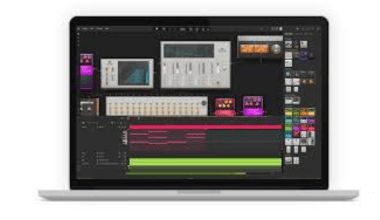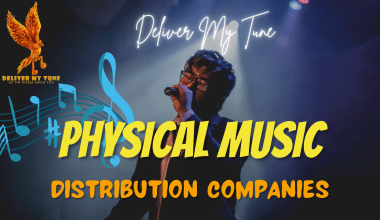In the digital age of music, understanding and utilizing music metadata is essential for any artist looking to distribute their music, track its performance, and get paid accurately. But what is music metadata? In this comprehensive guide, we will explore the importance of music metadata, its various components, how to manage it effectively, and why it’s crucial for your success as an artist.
What is Music Metadata?
Music metadata refers to the information embedded in audio files that provide details about the music. This data includes everything from the song title and artist name to more technical details like encoding information. Music metadata plays a crucial role in how your music is organized, discovered, and monetized on digital platforms.
Key Components of Music Metadata
- Basic Information: This includes the song title, artist name, album name, and track number. These basic details help listeners identify your music and are essential for organization.
- Contributor Information: This section includes the names of everyone involved in creating the track, such as composers, lyricists, producers, and performers.
- Technical Data: This involves information about the audio file itself, including the bit rate, sample rate, and file format.
- Commercial Metadata: This includes details relevant to the commercial aspect of the track, such as ISRC (International Standard Recording Code) and UPC (Universal Product Code).
- Rights and Ownership: Information about who owns the rights to the music, including record labels and publishing companies.
- Descriptive Metadata: This includes genres, moods, and keywords that help categorize the music and make it discoverable in searches.
Why is Music Metadata Important?
Discoverability
Music metadata helps digital platforms categorize and recommend your music to listeners. Proper metadata ensures your songs appear in relevant searches and playlists, increasing your chances of being discovered by new fans.
Royalty Collection
Accurate music metadata is essential for collecting royalties. It ensures that all parties involved in the creation of the music are properly credited and paid. This includes performance royalties, mechanical royalties, and digital streaming royalties.
Legal Protection
Metadata provides proof of ownership and authorship, which can be crucial in legal disputes. Having detailed metadata can help protect your rights and prove your involvement in the creation of a track.
Fan Engagement
Metadata can also enhance fan engagement by providing listeners with more information about the music they love. This can include background details about the song, the inspiration behind it, and the people involved in its creation.
Detailed Breakdown of Music Metadata Components
Basic Information
Song Title: The official name of the track. Make sure it’s spelled correctly and formatted consistently.
Artist Name: The name of the primary performing artist. Ensure this is consistent across all your releases.
Album Name: The title of the album or EP the track is part of. If it’s a single, this can be left blank or marked as a single.
Track Number: The position of the song within the album or EP.
Contributor Information
Composers and Lyricists: Names of the individuals who wrote the music and lyrics.
Producers: Names of the people who produced the track.
Performers: Names of the musicians and vocalists who performed on the track.
Technical Data
Bit Rate: The number of bits processed per unit of time, typically measured in kilobits per second (kbps).
Sample Rate: The number of samples of audio carried per second, typically measured in kilohertz (kHz).
File Format: The format of the audio file, such as MP3, WAV, or FLAC.
Commercial Metadata
ISRC: The International Standard Recording Code, a unique identifier for a specific recording.
UPC: The Universal Product Code, used to identify the album as a product in the commercial marketplace.
Rights and Ownership
Record Label: The name of the record label that owns the recording rights.
Publishing Company: The name of the publishing company that owns the rights to the composition.
Descriptive Metadata
Genres: The style or category of music, such as rock, pop, or classical.
Moods: Descriptive words that capture the feeling or mood of the music, such as happy, sad, or energetic.
Keywords: Additional words or phrases that help describe the music and make it more discoverable.
How to Manage Your Music Metadata
Using Digital Audio Workstations (DAWs)
Most DAWs allow you to enter basic metadata when you export your tracks. Ensure you fill in as much information as possible to keep your metadata consistent from the start.
Metadata Management Software
There are several software tools specifically designed to manage music metadata. These tools can help you organize, edit, and embed metadata into your audio files. Some popular options include:
- Mp3tag: A powerful tool for editing metadata of common audio formats.
- MusicBrainz Picard: A cross-platform music tagger that uses the MusicBrainz database to identify and tag your music files.
- TagScanner: A multifunction program for organizing and managing your music collection.
Digital Distribution Services
Many digital distribution services, such as DistroKid, TuneCore, and CD Baby, require you to enter detailed metadata when you submit your music. These services then distribute your tracks to various streaming platforms, ensuring your metadata is properly embedded and displayed.
Consistency is Key
Ensure that your music metadata is consistent across all platforms and releases. This includes using the same spellings, formats, and codes. Inconsistencies can lead to confusion and errors in royalty payments and music discovery.
Common Mistakes in Music Metadata
Misspellings and Typos
Even small errors in names or titles can cause big problems. Double-check all entries for accuracy.
Incomplete Metadata
Leaving out important information can lead to missed royalty payments and reduced discoverability. Always fill in as much information as possible.
Inconsistent Information
Using different names, formats, or codes for the same piece of information can cause confusion. Be consistent in how you enter and manage your metadata.
Ignoring Metadata Updates
Metadata can change over time, especially if you release remixes, covers, or new versions of your songs. Ensure you update your metadata to reflect these changes.
The Future of Music Metadata
Enhanced Discoverability with AI
As artificial intelligence and machine learning continue to advance, it will play an even more crucial role in how music is discovered. AI algorithms rely heavily on metadata to recommend music to listeners, so having accurate and detailed metadata will be essential.
Blockchain Technology
Blockchain technology has the potential to revolutionize music metadata by providing a decentralized and transparent way to manage and verify metadata. This could help reduce disputes over ownership and royalties, making the music industry more fair and transparent.
Metadata Standards and Best Practices
Organizations like the Recording Academy and the Music Business Association are working to establish metadata standards and best practices. These standards will help ensure that metadata is consistent and accurate across the industry.
Conclusion
Understanding and managing music metadata is crucial for any artist in the digital age. Proper music metadata ensures that your music is discoverable, that you get paid accurately, and that your rights are protected. By taking the time to understand what is music metadata and how to manage it effectively, you can set yourself up for success in the music industry.
For further reading, explore these related articles:
- What is Apple Music Style Guide?
- Understanding Why Song Audio Gets Rejected from Streaming Platforms
- What is an UPC and ISRC Code?
- Benefits of Midweek Music Release
For additional resources on music marketing and distribution, visit Deliver My Tune.






